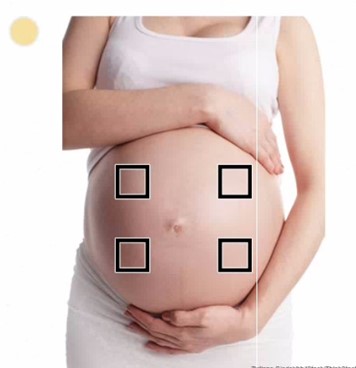ATI Maternal Newborn 2019 with NGN
Total Questions : 71
Showing 10 questions, Sign in for moreA nurse is assessing a client who has preeclampsia during a prenatal visit. Which of the following findings should the nurse report to the provider?
A nurse is planning care for a newborn who is scheduled to start phototherapy using a lamp. Which of the following actions should the nurse include in the plan?
A nurse is performing an assessment for a newborn and notes breast tissue that has a flat areola with no bud. The nurse should identify that this finding indicates which of the following conditions?
A nurse is caring for a newborn immediately following birth and notes a large amount of mucus in the newborn's mouth and nose. Identify the sequence the nurse should follow when performing suction with a bulb syringe.
Explanation
The correct answer is choice B, D, C, A. B. Compress the bulb syringe: The nurse should first compress the bulb syringe to expel air from it. This ensures that when it is placed in the newborn’s mouth or nose, it can create suction to effectively remove mucus. D. Place the bulb syringe in the newborn's mouth: The nurse should then place the compressed bulb syringe into the newborn’s mouth first, as clearing the mouth is essential before the nose to prevent aspiration. C. Use the bulb syringe to suction the newborn's nose: After suctioning the mouth, the nurse should use the bulb syringe to suction the nose. Suctioning the nose after the mouth helps to clear the airway more effectively and reduce the risk of mucus being aspirated into the lungs. A. Assess the newborn for reflex bradycardia: After suctioning, the nurse should assess the newborn for any signs of reflex bradycardia, which can occur due to vagal stimulation during suctioning. This ensures the newborn's heart rate and overall well-being are monitored.
A nurse is assessing a client who is at 39 weeks of gestation and determines that the fetus is in a left occipitoanterior position. On which of the following sites should the nurse place the external fetal monitor to hear the point of maximum impulse of the fetal heart rate?

- Escherichia coli infection resulting in necrotizing enterocolitis Hgb 10g/dL
- Platelet count 50,000 mm
- WBC count 4,000 mm3
- Oxygen saturation level 90% Respirations shallow 70/min
- Behavioral indicators of pain: Rigid extremities: grimacing:
- Irritability
- Decreased activity level over the last 12 hr
- Abdominal distension
- Three bloody stools over the last 8 hr
- Superficial rash on the abdominal wall
- Light palpation of the abdomen leads to fist clenching,
A nurse is caring for a 2-day-old newborn who was born at 35 weeks of gestation.
Which of the following actions should the nurse take
A nurse is performing an assessment for a newborn and notes breast tissue that has a flat areola with no bud. The nurse should identify that this finding indicates which of the following conditions?
- Temperature 37° C (98.6° F)
- Pulse rate 78/min
- Respiratory rate 12/min
- Blood pressure 124/80 mm Hg
- Pulse oximetry 100%
A nurse is assessing a postpartum client during a follow-up visit.
The nurse is teaching the client about postpartum depression. The nurse should encourage the client to
Explanation
The correct answer is Eating a well-balanced diet and exercising for 30 minutes per day.
Itcan help to reduce stress and improve mood, which can help to prevent postpartum depression. This provide the body with the essential nutrients it needs to function properly and maintain good health. Exercise can help to reduce stress and improve mood by releasing endorphins, which are hormones that can help to improve mood and reduce stress.
A nurse on the labor and delivery unit is planning care for a client who has human immunodeficiency virus (HIV). Which of the following is an appropriate action for the nurse to take following the birth of the newborn?
A nurse is teaching a newly hired nurse about Apgar scoring. Which of the following statements by the newly hired nurse indicates an understanding of the teaching?
Sign Up or Login to view all the 71 Questions on this Exam
Join over 100,000+ nursing students using Naxlex’s science-backend flashcards, practice tests and expert solutions to improve their grades and reach their goals.
Sign Up Now


